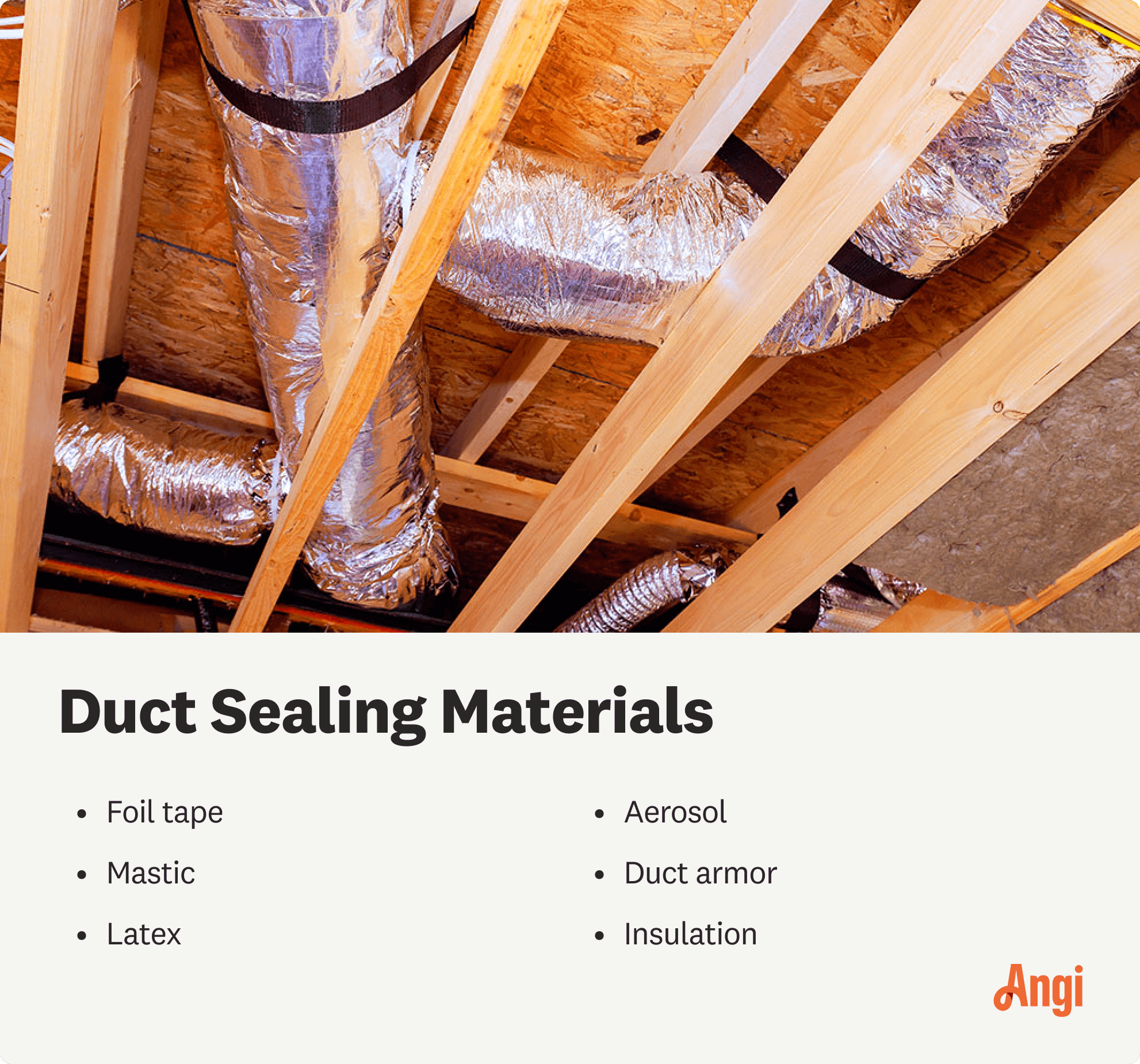
Considering a heat pump to reduce monthly heating and cooling bills? Find out geothermal heat pump costs based on system type, capacity, and other factors.
Keep your home cozy while reducing your energy bills


Most homes lose 20% to 30% of the air running through their ductwork through leaks, holes, and bad connections. That means you’re wasting money each month on your energy bills, especially in winter. Keep your home more comfortable and reduce your energy costs by learning how to seal leaky ductwork yourself.
Most ductwork is surrounded by fiberglass and located in dusty, dirty areas. Before working on your ducts, protect yourself with long sleeves, pants, gloves, safety glasses, and a dust mask.

Before starting your project, identify problem areas in your ductwork. Inspect for holes, damage, disconnections, and poor sealing. Pay special attention to areas with excessive dust around the vents, as this can indicate a leak.
Duct sealing products will not adhere properly to dust and dirt. To prep ducts for repairs, remove the insulation, then use a rag dipped in a mild cleaning solution to clean the area around the leaks. Scrub a few inches past the gap in every direction.

Mastic is a thick substance that dries to create a strong but flexible seal over holes, seams, and joints. Use a paintbrush or putty knife to apply a thick layer of mastic over small leaks, ensuring the coverage extends a few inches over the leak in all directions to create a strong seal.
Use foil tape along longitudinal seams or areas where the ducts connect. Cut a piece of tape large enough to cover the entire seam. Extend it past the edges of seams or overlap the tape on joints. Push the tape onto the duct, working to ensure there are no wrinkles. Firmly smooth the tape out to remove bubbles and ensure maximum adhesion.
Avoid using your heating or cooling system for 24 to 48 hours to allow the mastic to cure. Once the mastic has dried completely, run your HVAC to test it. Use a smoke pencil or incense at nearby vents to check if your seals worked properly. If the smoke escapes, apply more mastic or tape, allow it to dry, then test again.

Measure your ducts and cut fiberglass insulation to wrap around them. Secure the insulation with small pieces of foil tape before applying a long strip along the seam.
Sealing ducts is pretty straightforward, even if it can be time-consuming. However, to do the job properly, avoid common pitfalls.
Never use duct tape. Despite its name, duct tape is not suitable for use on ducts as it deteriorates quickly and does not hold up over time. Only use foil tape designed for HVAC systems.
Don’t forget to check connections. The joints where ducts meet vents and other ducts are the most common areas for leaks.
Clean the ducts first. Nothing sticks well to dust. To ensure your seals stick around, always clean the surface before use.
Don’t seal ducts with major damage. When your ducts have holes over ½ inch or have been severely crushed, replace the section or hire a pro to do the repairs.
While you may be able to seal exposed ducts yourself, the majority of ductwork in most homes is difficult to access, which means hiring a pro.
An HVAC contractor or duct installer near you can inspect your whole system using pressure testers, leakage testers, and infrared cameras to identify leaks invisible to the naked eye. They can repair crushed or damaged ducts, seal and insulate the ductwork, then check the airflow to ensure their efforts were successful.
Professional duct repairs cost an average of $2,250, depending on the method and the size of your HVAC system. While you may be tempted to save money with a DIY, professional services are drastically more effective and will save you more money in the long run.
From average costs to expert advice, get all the answers you need to get your job done.

Considering a heat pump to reduce monthly heating and cooling bills? Find out geothermal heat pump costs based on system type, capacity, and other factors.

Repairing ductwork in a crawl space is frustrating and difficult, which is reflected in the cost. Learn why limited access results in a premium cost beyond just a simple increase in labor hours.

Whole-house humidifier costs vary based on the type and size of the unit, along with other factors. The price might be worth it for people living in dry regions.

Tackling unwanted odors from indoor plants can be tricky. Learn how to use a carbon filter in your duct fan to improve air quality.

Discover the average air handler replacement cost, including labor and materials, plus expert tips to help you budget and save on your HVAC upgrade.

Not sure which kind of thermostat is best for your home? Here’s an overview of three types of thermostats so that you can choose the right one for you.